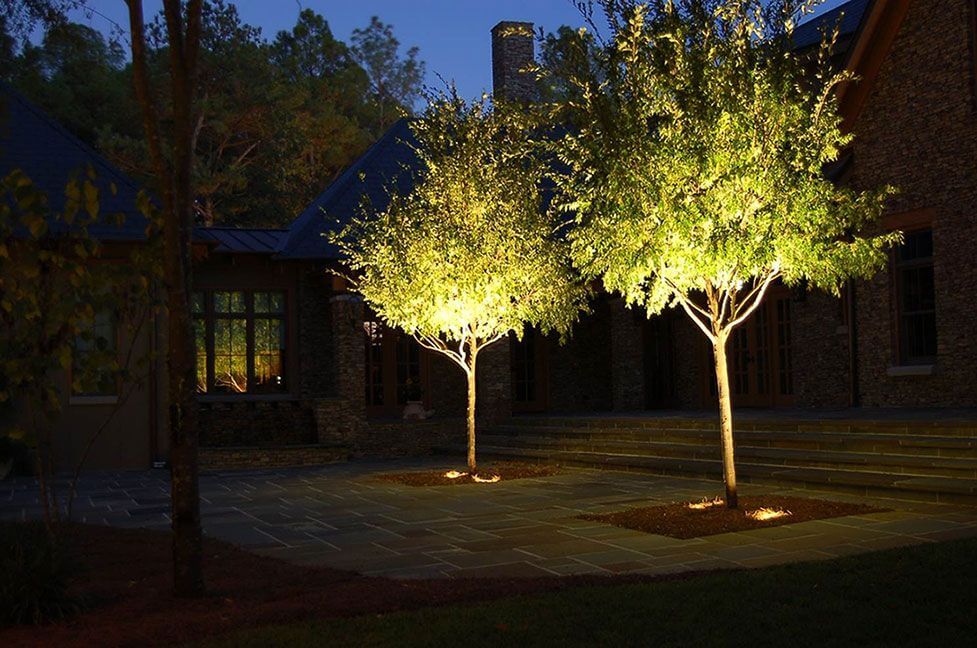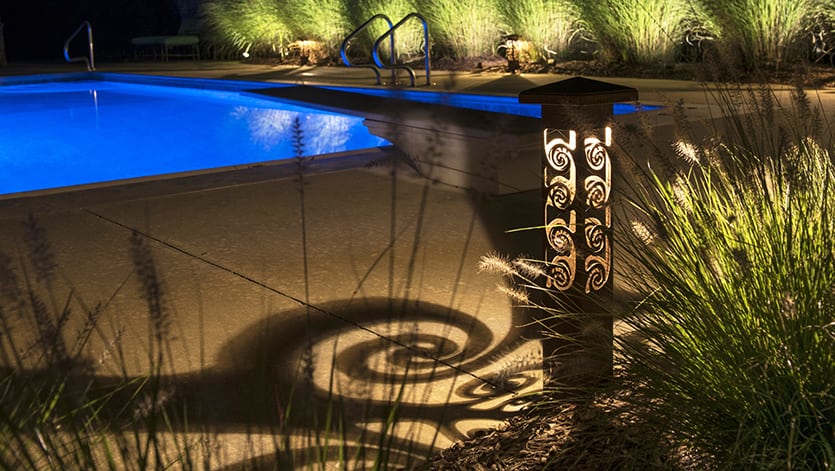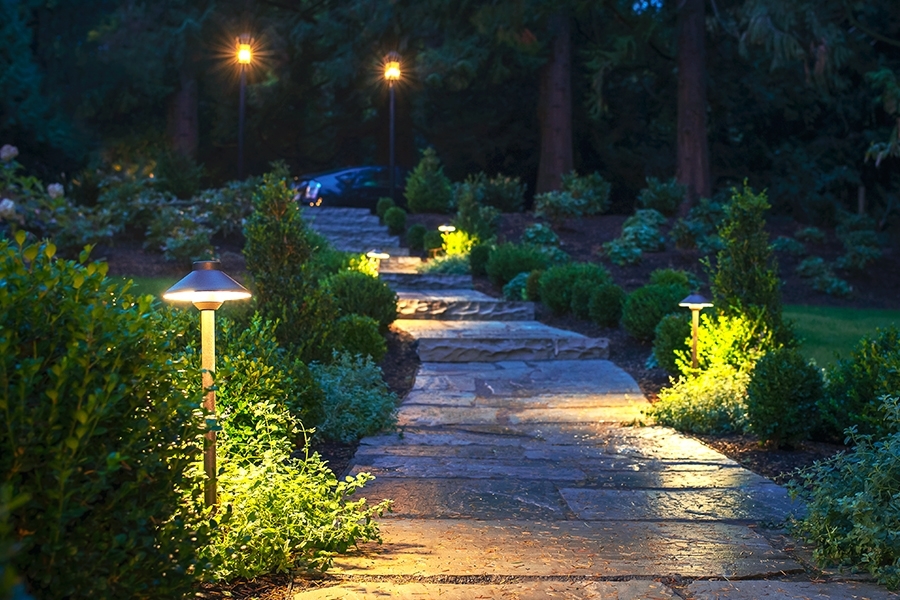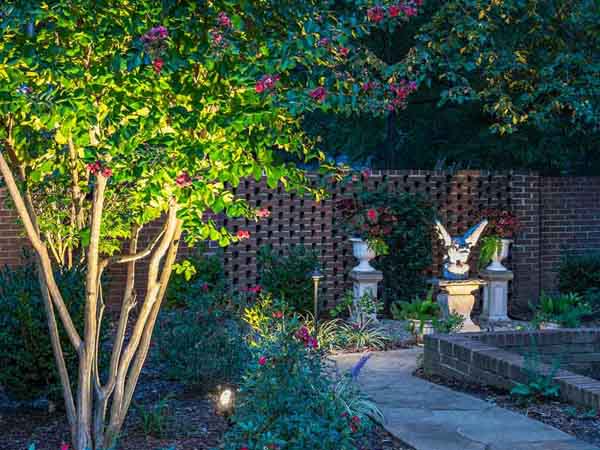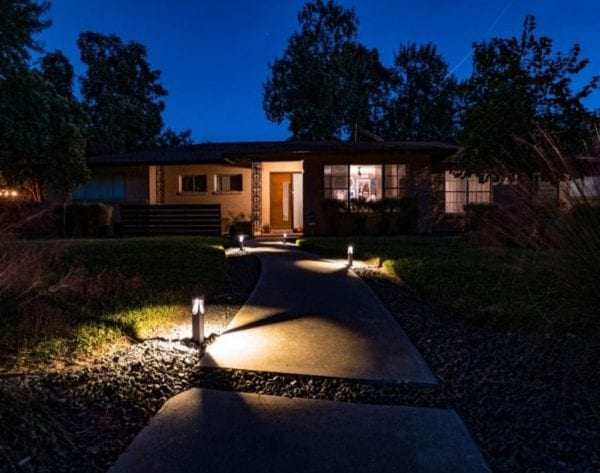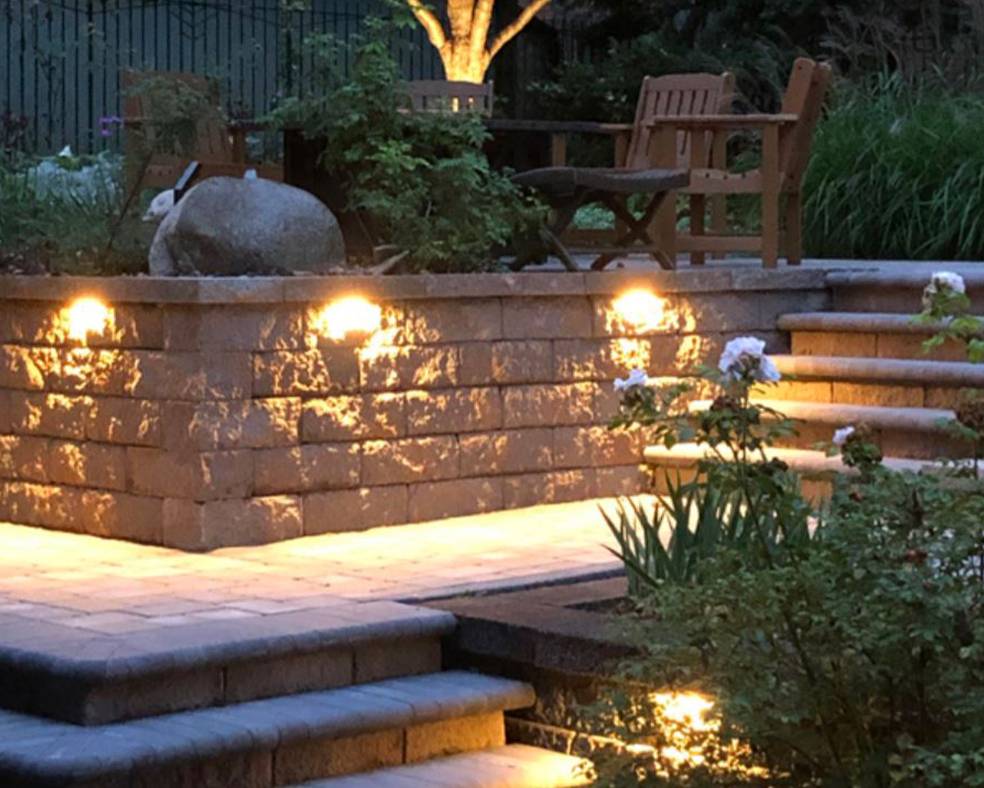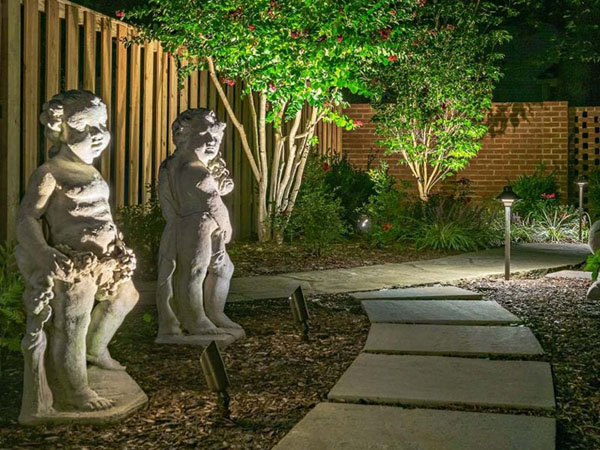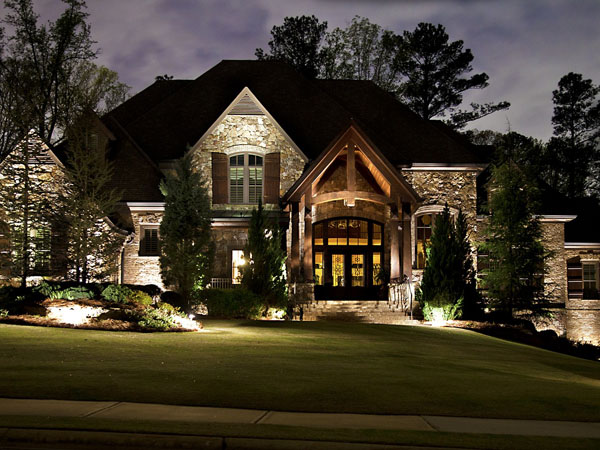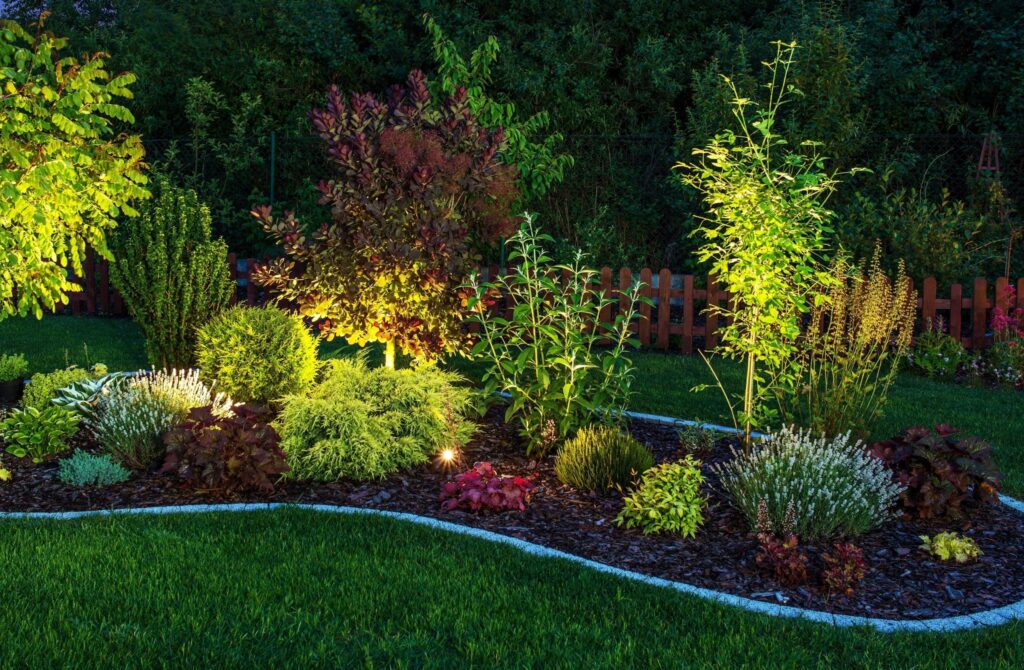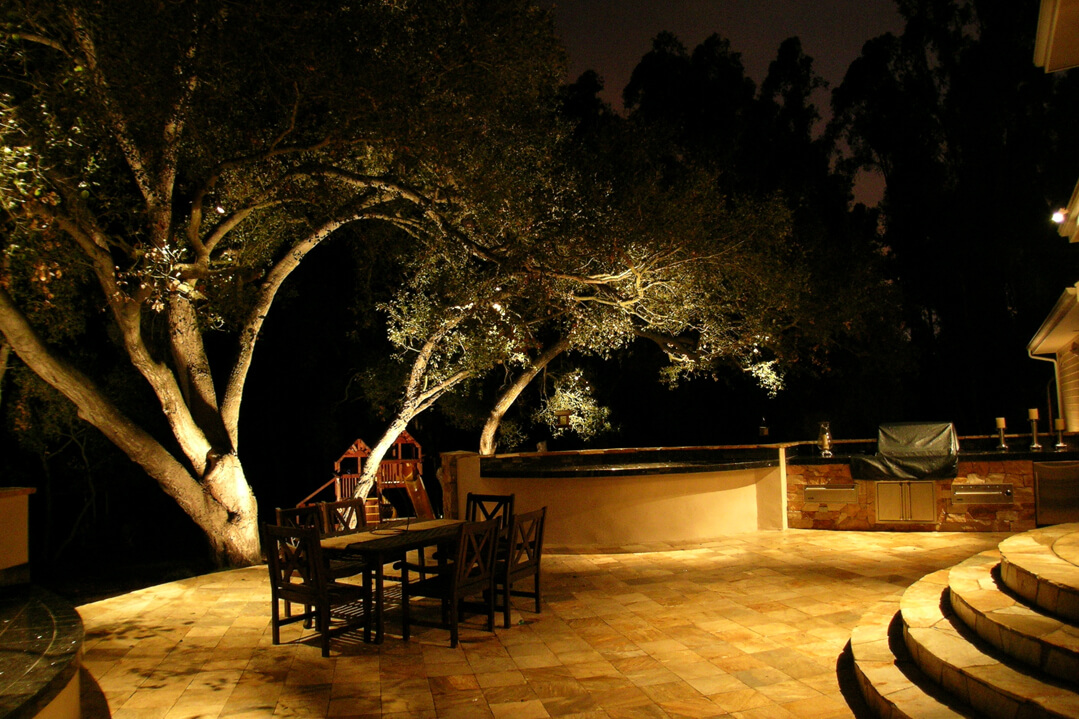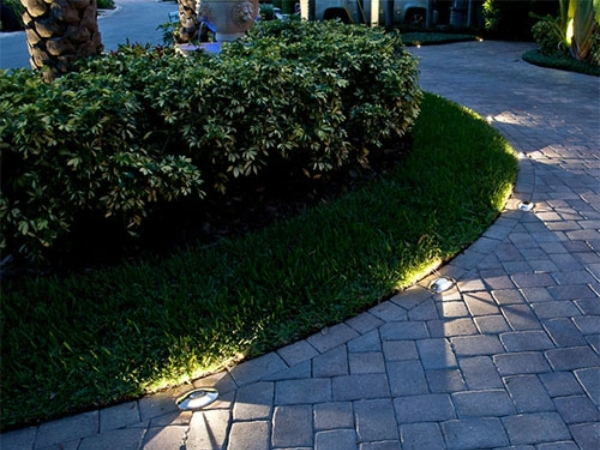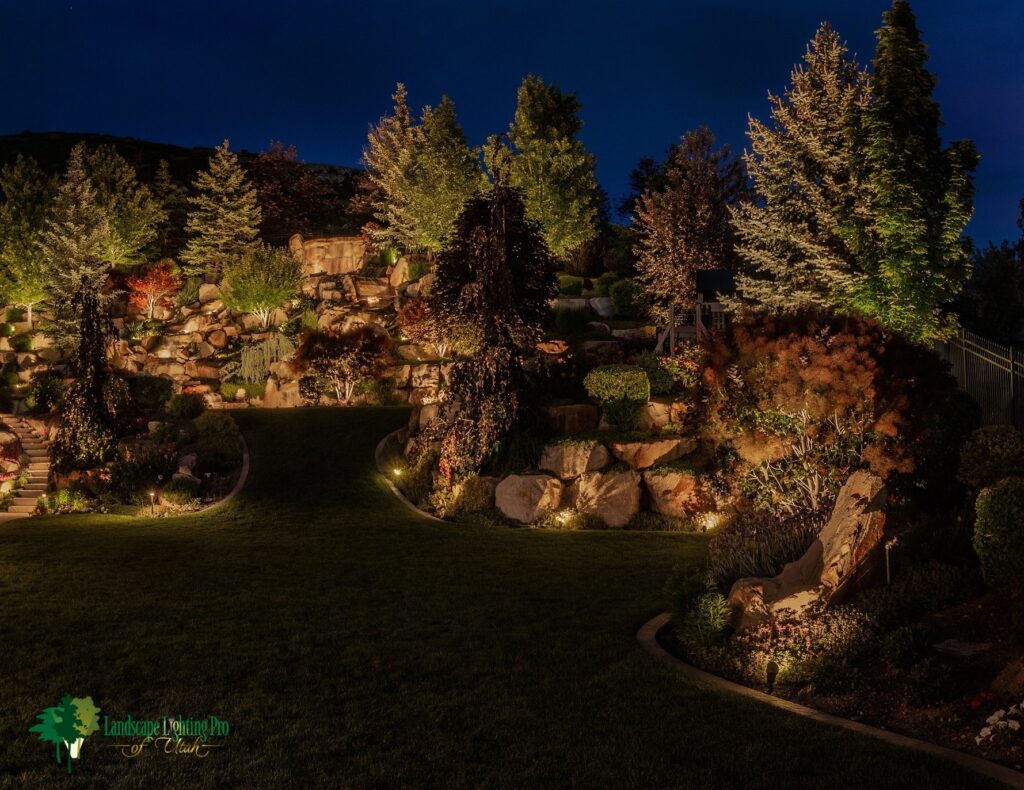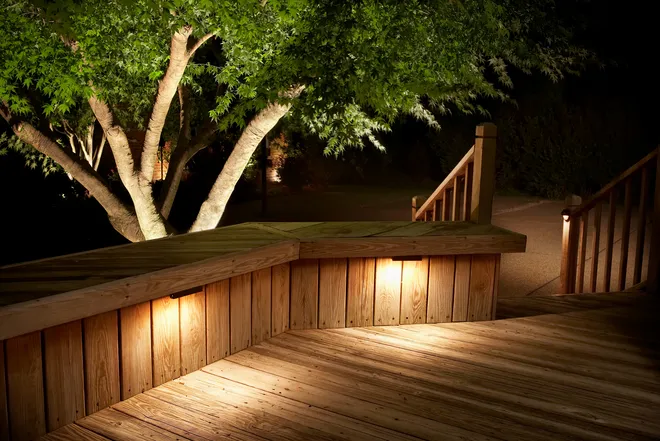Call For a Free Quote
Landscape Lighting Design
Here is a list of my favorite lighting effects and recommendations for the fixtures and placement to create them. Discover the best techniques for highlighting trees, emphasizing a fountain, or lighting a garden path.
These are just a few of the creative techniques I use regularly in designing nightscapes. With a little imagination there’s no limit to the number of ways you can add magic to your nighttime yard with outdoor lighting effects.
Up-Lighting
Up-lighting is a great technique for highlighting a tree’s leaves or branches.
This lighting technique uses low-voltage light fixtures with halogen or led bulbs that light a tree from the ground up to show off its shape and trunk structure. 1-2 fixtures placed at the base of the tree and pointed upwards will show off and highlight the main trunk structure. To capture the canopy of the tree and show off the branches and leaves place a fixture 8-10 feet away from the trunk. It is best to use fixtures that have a convex lens so that irrigation water runs off the lens.
Up-Lighting
Moonlighting
Moonlighting can be used to create interesting shadows on a patio or lawn.
To create this lighting effect, fixtures are placed high in a tree and aimed downward. This is a great way to down-light a patio. Place multiple fixtures high up in the tree branches and cross light down on the hardscape below. The leaves and branches of the tree cast interesting shadows on patios and pathways and mimic the effect of a full moon lit sky.
Moonlighting
Silhouetting
Plants with a distinct structure or leaf shape are perfect for silhouetting.
For this effect, a spread light is placed between plant material, sculpture or a fountain, and an adjacent structure. The effect is that the object is silhouetted in black against a soft white background. Spread lights are typically halogen bulbs with a mirrored background. They create a wide band of clean white light, perfect for back-lighting a wall, house or structure to create a silhouette effect. Multiple fixtures may be required depending on how much of the wall you need to light.
Silhouetting
Shadowing
Using lights to create shadows on walls or fences will add drama and depth to your landscape. This involves washing a feature such as a tree or statue so that it casts a shadow on a wall or fence. The play of light and darkness can be quite intriguing, especially if the object is affected by the breeze. Lighting the object from low down and angling upward can provide a larger than life dramatic effect.
Shadowing
Grazing
Outdoor stone work can be displayed at night using a lighting technique called grazing. To highlight an interesting texture or stone work, spread-lights or up-lights are placed right next to the wall with beams directed upwards. This casts shadows that delicately capture the texture of the wall. This effect is terrific to show off your stone work on walls and pilasters
Grazing
Path Lighting
Path lights are essential for helping people find their way through the landscape at night. At its most basic, path and step lighting exists to keep the walker safe. You want to make sure all obstacles and turns are well illuminated. Use lighting to direct the walker along the path you wish him to take. A carefully lit path can give a sense of romance or adventure – it should
Path Lighting
Spotlighting
This technique uses a fixture to highlight a focal point such as a flag, statue or water fountain. Use one or two spotlights to highlight your favorite feature in the garden.
Spotlighting
Pool Lighting
Swimming pool lighting is important both for safety and for aesthetics. We use fixtures mounted on the stone where people may climb out of the pool. You can also use underwater lights or ambient lighting in the surrounding landscape to make after-hours swimming inviting to you and your guests.
Pool Lighting
Underwater Lighting
Fixtures submersed in water features create an extra special effect at night. Light literally dances across walls and room ceilings when water passes over it. Use submersible lights in ponds, fountains and swimming pools. Moving water, especially, can change and produce fascinating ripples and glints. A fish crossing over the light produces wonderful effects of color and shadow. And lighting the water from underneath adds depth to what would otherwise be a flat surface. Don’t’ have a water feature to light? Use cool new “ripple lights” that have their own small water pump and splash water across small dish over the light lens for outstanding water-feature like effects. Color changing pool lights are used to provide both motion and color in the pool or spa. New Led lights are brighter and less-expensive than fiber-optic alternatives.
Underwater Lighting
Washing
Place the light to the side of what you want to illuminate and let the light “wash” over it, bathing an entire wall or row of bushes. This will create a soft glow over the whole area. Experiment with the height and angle of the light to see what provides the best result.
Washing
Down-Lighting from Structures
Down-Lighting can be used in a number of ways. Fixtures are placed in patio covers, under eaves of the house roof line, on garden walls or placed in trees to down-light patios and pathways. Use down-lighting to show off a bed of flowers, or a beautiful plant. Hang or fix the light just high enough to spread a circle of light around the feature you wish to emphasize. If that’s not an option, consider a light that can be focused to get the size circle you desire. Down-lighting is also useful for illuminating doorways and other entrances and exits.
Down-Lighting from Structures
Down-Lighting from Hardscape
Light fixtures can be installed upside down in benches, countertops, and wall windows to cast subtle lighting along pathways and patios. During the day, fixtures are hidden beneath the hardscape but at night their light defines an area with a surrounding glow that draws guests in.

